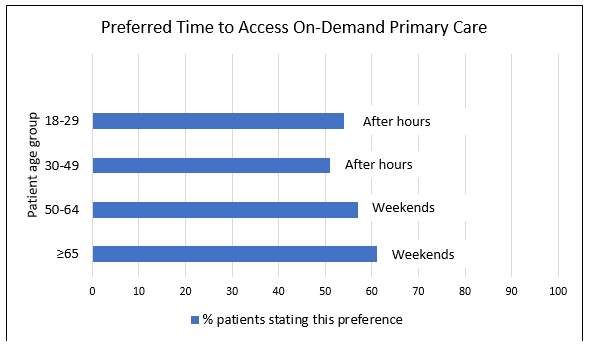Published on
If you’ve worked in more than one setting—say, a traditional primary care office and an urgent care center—you’ve probably noticed differing patient preferences. It’s self-evident, for example, that patient who go to urgent care centers prioritize being able to see a provider today over waiting a few days to see their “regular” doctor.
You may have been too busy treating those patients to notice that certain preferences can be age-specific, however. Advisory Board conducted a survey of thousands of U.S. healthcare consumers to get a sense of that dynamic, however, and the results could be invaluable in helping you target the patients who are most likely to become regulars. You might also gain some insights into how to appeal to potential patients who might be less inclined to think “urgent care” first, but could see the value (including intrinsic value, at times) of visiting an urgent care center.
Please note that the survey included “on-demand primary care,” primary care physicians, specialty care, surgical care, and virtual visits. We’re highlighting the data for on-demand primary care here because it’s most applicable to urgent care.
Adapted from: Advisory Board. How Consumers’ Health Care Preferences Vary by Age.
Adapted from: Advisory Board. How Consumers’ Health Care Preferences Vary by Age.


